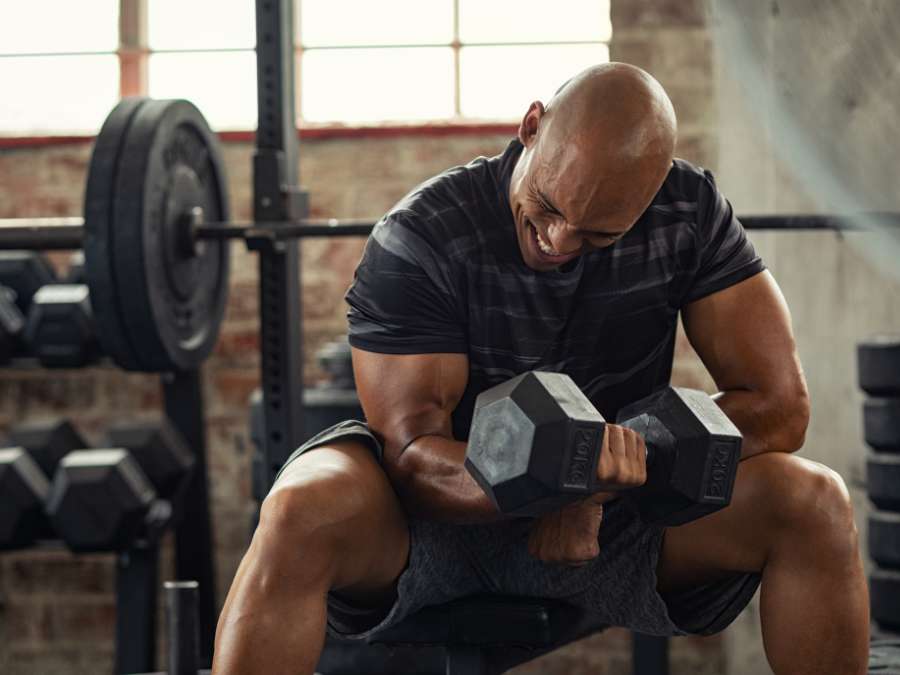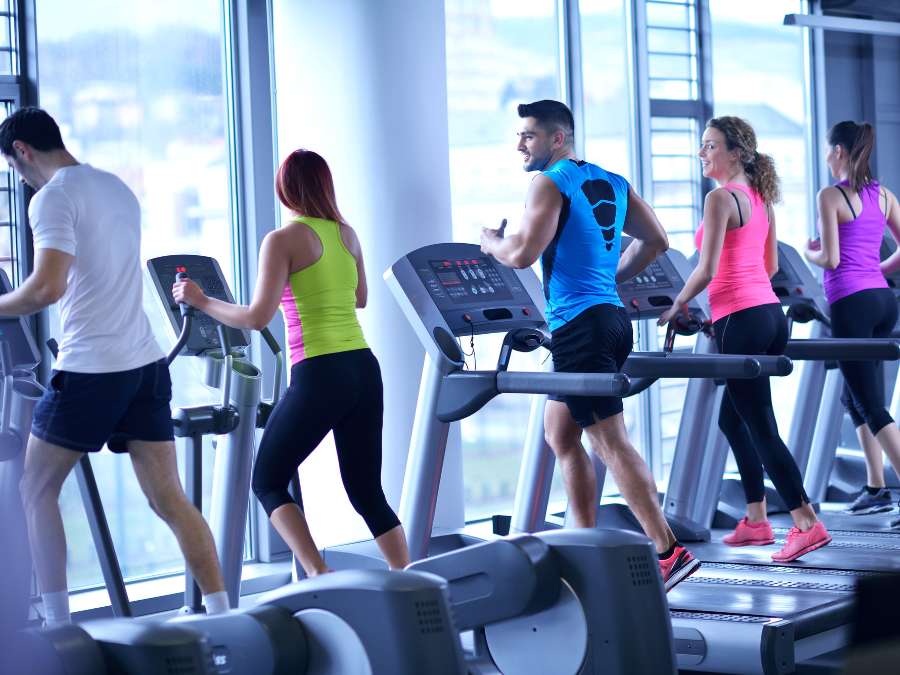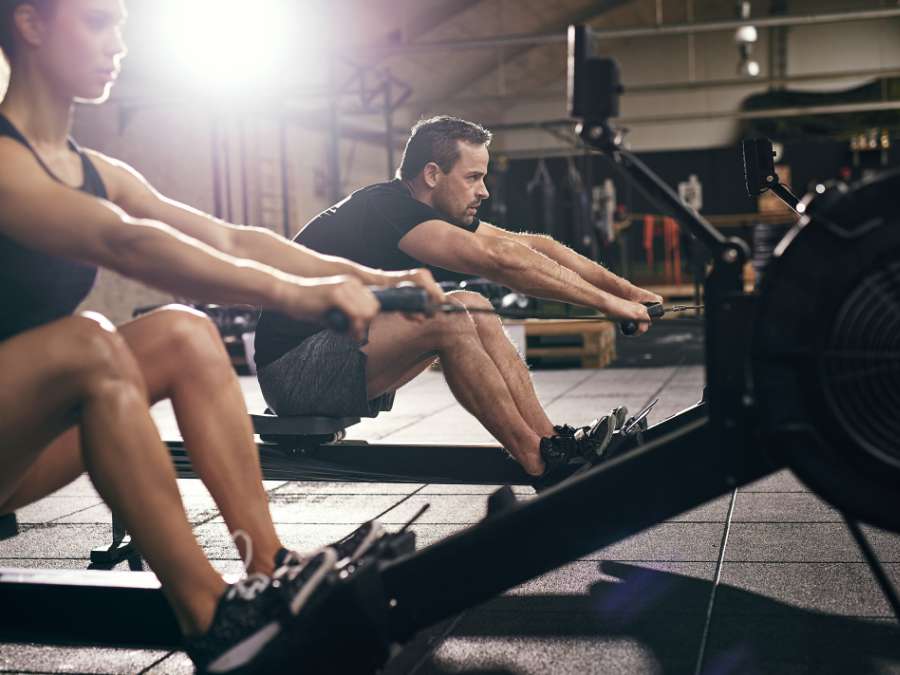Should cardio be done before or after lifting weights? The answer is depends on the individual’s goals and what they are trying to achieve.
As a Gym Equipment expert, many fitness enthusiasts often seek advice on how to effectively combine cardio and weightlifting.
Do not worry, understanding the right timing for cardio can be made simple.
This guide will explain how specific fitness goals, whether fat loss, muscle building, or endurance improvement, influence the best time for cardio. It will also explore the advantages of each approach and highlight common mistakes to avoid.
So let’s get started!
Table of Contents
- 1. Can You Do Cardio Before or After Lifting Weights?
- 2. Cardio Before Lifting Weights
- 3. Cardio After Lifting Weights
- 4. Types of Cardio to Combine With Weightlifting
- 5. Common Mistakes to Avoid When Combining Cardio and Weightlifting
- 6. 3 Tips for Combining Cardio and Weightlifting Effectively
- Conclusion
1. Can You Do Cardio Before or After Lifting Weights?
When deciding whether to do cardio before or after lifting weights, it really depends on what someone is aiming for. If improving endurance is the aim, doing cardio first allows the body to focus on heart and lung health. However, if building strength is the priority, lifting weights first is the better option, as it saves more energy for heavy lifting.
The cool thing is, there’s no wrong way to combine cardio and weightlifting; it’s all about personal goals. Some people prefer to split them up entirely, doing cardio and weight training on different days. Others like to mix them in the same workout, tailoring them to how they feel that day. Either way, balancing both cardio and strength exercises helps with overall fitness.

2. Cardio Before Lifting Weights
Doing cardio before lifting weights can be a good choice, especially for those who want to improve their endurance or burn more calories. The fact is, this approach can influence the overall energy levels during the workout. Here are the pros and cons of doing cardio first:
Pros:
- Helps increase endurance by focusing on heart and lung strength early in the workout.
- Warms up muscles and joints, reducing the risk of injury during weightlifting.
- Can aid in burning more calories during the entire session.
Cons:
- Might leave anyone with less energy for weightlifting, affecting strength gains.
- Longer cardio sessions could lead to muscle fatigue before lifting.
- It could reduce focus on strength training if too much energy is used in cardio.
3. Cardio After Lifting Weights
Doing cardio after weightlifting is a common approach, especially for those who prioritize strength or muscle building. By focusing on lifting first, individuals can conserve energy for heavier weights. Here are some pros and cons to consider:
Pros:
- Allows more energy to be spent on strength training without being fatigued from cardio.
- Helps burn additional calories after lifting, when the body is already primed for fat burning.
- On top of that,performing cardio after weights can support recovery by promoting better blood flow to the muscles.
Cons:
- Cardio performance might suffer, as the body is already tired from lifting.
- Motivation for cardio may drop after an intense weight session.
- It could make workouts longer, making it harder to stay consistent with the routine.

4. Types of Cardio to Combine With Weightlifting
Choosing the right type of cardio to pair with weightlifting can make a big difference in overall results. The key is to find cardio that complements strength training without overloading the body. Here are some common types of cardio that work well with weightlifting:
Running
Running is one of the most popular forms of cardio. It can be done at varying intensities, making it suitable for different fitness goals. However, it turns out that long-distance running might tire muscles before lifting, so shorter runs or interval training are often a better fit.

Cycling
Cycling is great for building lower-body endurance without putting too much strain on joints. It allows for steady-state cardio or high-intensity intervals. This form of cardio can be adjusted easily depending on the intensity needed, making it versatile.

Rowing
Rowing is a full-body workout that boosts cardiovascular fitness while also working various muscle groups. It’s effective for those looking to combine cardio with some added strength training. It also tends to be less exhausting on the legs compared to running.

Swimming
Swimming offers a low-impact option that can improve endurance and build lung capacity. It’s especially good for those who need to avoid stress on their joints. Additionally, it helps with muscle recovery after weight training sessions.

5. Common Mistakes to Avoid When Combining Cardio and Weightlifting
When blending cardio and weightlifting into a single routine, some common errors can reduce the effectiveness of both. Avoiding these mistakes can help individuals get the most out of their workouts. Here are a few to watch out for:
Doing Too Much Cardio Before Lifting
Doing long or intense cardio sessions before weightlifting can drain energy needed for strength training. As a matter of fact, this can lead to decreased performance during lifting, making it harder to build muscle or lift heavier weights.
Not Allowing Enough Recovery Time
It’s important to let the body recover between cardio and strength sessions. Overloading the body without proper rest can lead to fatigue and even injury, limiting long-term progress.
Skipping Warm-Ups or Cool-Downs
Skipping a proper warm-up or cool-down can raise the risk of injury and slow recovery. A light cardio session before lifting and a cool-down afterward help prevent muscle strain. A study from Tri-City Medical Center found that 70% of participants who performed intense exercises without warming up had abnormal heart readings due to insufficient oxygen supply. This highlights the importance of preparing the body for exercise.
Choosing the Wrong Type of Cardio
Some types of cardio, like long-distance running, can be too tiring to combine with lifting. Opting for shorter, high-intensity bursts or low-impact options like cycling or swimming can be more effective when paired with weightlifting.
Ignoring Nutrition Needs
Cardio and weightlifting together can burn a lot of calories, and many people underestimate their nutrition needs. Without proper fuel, workouts can feel sluggish, and muscle recovery can slow down. Eating the right balance of protein and carbs is key.
Here’s a table that breaks down the key nutritional needs for those combining cardio and weightlifting:
Nutrient | Importance | Recommended Sources |
Protein | Essential for muscle repair and growth. | Chicken, fish, tofu, legumes, dairy. |
Carbohydrates | Provides energy for workouts and aids in recovery. | Whole grains, fruits, vegetables, legumes. |
Fats | Supports overall health and helps with hormone production. | Nuts, seeds, avocados, olive oil. |
Water | Prevents dehydration and aids in overall bodily functions. | Water, herbal teas, fruits with high water content. |
6. 3 Tips for Combining Cardio and Weightlifting Effectively
Combining cardio and weightlifting in a workout routine can be a great way to achieve both strength and endurance goals. However, it’s important to do it in a way that maximizes results without overloading the body. Here are some helpful tips for combining both exercises effectively:
#1 Prioritize Based on Goals
It’s important to decide what the main goal is—whether it’s building muscle or increasing endurance. If strength is the priority, start with weightlifting and save cardio for after. If cardio performance is more important, do it first. And the best part is, adjusting the order based on goals helps achieve better results in the long run.
#2 Alternate Workout Days
One of the most effective ways to combine both is to alternate between cardio and weightlifting days. For instance, someone could do weightlifting on Monday, Wednesday, and Friday, while reserving cardio for Tuesday and Thursday. This gives muscles time to recover.
#3 Listen to the Body
Pay attention to how the body feels and adjust workouts as needed. For example, if energy levels are low after a heavy lifting session, doing a light cardio workout like walking or cycling might be a better option. Similarly, if muscles feel too sore, skipping cardio and focusing on stretching or recovery exercises can be more beneficial.
Conclusion
Choosing whether to do cardio before or after lifting weights depends on the fitness goals of each individual. Both options offer different benefits, whether the focus is on building endurance or increasing strength. The key is to choose the approach that best supports those goals.
This article helps businesses and fitness professionals understand the pros and cons of each method, allowing them to make informed decisions for their clients. For high-quality gym equipment that supports both cardio and strength training, YR Fitness has the solutions you need. Contact us today to learn how we can help improve your fitness offerings.
Related articles:





